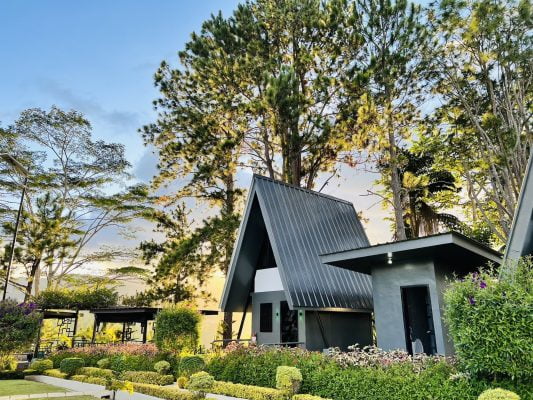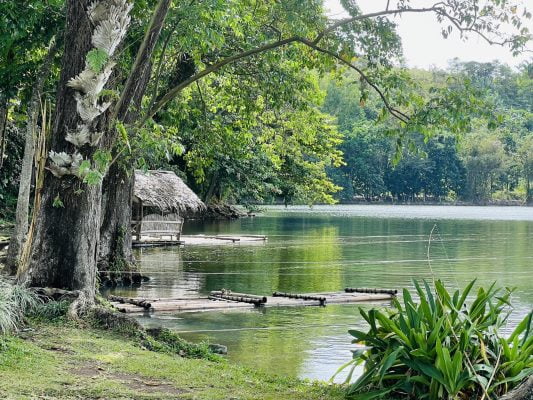Davao is known to be the largest city in the world. The vast land of Davao is covered by mostly greenery and houses, tons of wonderful nature crops, sea life, and abundant clean water. The culture, people, and the climate are also the top reasons why they say that In Davao “Life is here”. From the vast lands, colourful and hospitable people, it is also bestowed with abundant resources of water, fruits, seafood, and crops. Let us discover more why Davao is home to many Filipinos and migrants alike.
A Brief History of Davao
Davao was a distinct geopolitical entity during the last fifty years of the Spanish regime in the Philippines. This started during the conquest of Davao Gulf area in 1848 that the Spanish sway in these parts became de facto, and history of the city was initially recorded. During this time, A Don Jose Cruz de Oyanguren, a native Vergara, Spain, received a special grant from Don Narciso Claveria, the Governor-General of the archipelago, to conquer and subdue the entire gulf district, expel the Moros and establish a Christian Religion.
They arrived in Davao comprising of 70 men and women. They have also found an ally with them by the name of Datu Daupan, the chief of the Samal Mandayas. Datu Daupan said that the Oyanguren’s colonizing gave a chance to get even with Datu Bago the Muslim Chief of Davao Gulf who treated the Mandayas badly. However, the initial attack by Oyanguren was a fail and they retreated. He then erected at Piapi a palisade for his defence and contructed across nipa swaps to the dry sections of the meadows.
Fortunately, help came to them in defeating the settlement of Datu Bago. In late June, the help came by the name of Don Manuel Quesada of Zamboanga of which is the Navy commanding General. He arrived with a company of gunned defenders and infantry. This made the Muslims retreat and Oyanguren had a peaceful possession of the Davao Gulf territory at the end of 1849. But to no avail was his efforts to prosper in trade and commerce for the city thus there was only little headway of economic growth for the Davao Gulf.
By 1852, Oyanguren was relieved of the command of Davao by Governor General Blanco, Marquis de Solana. In 1867, the original settlement made by the former Oyanguren was moved to the present site of St. Peter’s Church as the center edifice on the intersection of San Pedro and Claveria Streets. And by 1868, the name “Davao” was adopted by the pioneering Christian inhibitants of the city. Also in the same year, the Jesuit Fathers arrived to persuade and win over natives to folds of Christian life and they have succeeded in such endeavour.
In the early years of American rules in late 1898, the town had marked growth and popularity of becoming a rich potential for agricultural investment. Forest lands were everywhere and source of agriculture was abundant. Import of imported seeds and crops were made and invested for hundreds of acres in the city. During the first 2 decades of the 20th century, Davao became one of the major producers of export agricultural products. It also became a regular port for shipping to other countries. As Davao progressed tremendously, the leaders with the encouragement of President Manuel L. Quezon opted to create Davao as a City.
Although the World War II brought much destruction to the new city and also to its people, the city was then rebuilt and aided by US Army officials thus returning the once wonderful grandeur of the city. Today, the City is inhibited by a mixed local natives and tribes making it one of the colourful cities in the country. Imbibing the early teachings of the Spanish missionaries and other qualities from its previous conquerors the people of Davao become more present and more colourful that others.
Geography of Davao
Davao city is located in the south-eastern part of Mindanao, of which is one of the archipelago of Philippines. It is reputedly the largest city in the world with an area of 244, 000 hectares or 8% of the land area of the whole Southern-Mindanao Region (Region IX). It is divided into 3 congressional districts and furthermore divided into 11 administrative districts.
The city is the regional trade center of Southern Mindanao, international trade center to Southern Pacific, and Southern Gateway to and from neighbouring countries such as Indonesia, Malaysia, Brunei, Australia, and others. Almost 50% of the city is timberland or forest while 43% is Agricultural. This reflects that agricultural lands and plantations of crops and fruits is one of the largest sectors in the city. Also, the city is blessed with abundant and fresh drinking water both ground and surface. The famous Mt. Apo, the highest peak of the Philippines, serves as the recharge point and the areas on the foot of this mountain contain large reservoirs.
The substantial part of the city is actually full of mountains and mountain ranges with uneven distribution of plateaus and lowlands. Furthermore, the city is also abundant in different bodies of water including lakes, rivers, and streams. Since a large part of the city is forested and full of greenery, fresh air is accessible as well as breathtaking nature trips are possible making it a healthy and friendly place to come home to.
Culture and People
Davao City is home to over a million people. The daytime population reaches about 2 million since it is the center of trade, commerce, and services in Southern Philippines. Like most of the Filipinos in the Philippines, Filipinos in Davao—termed as “Davaoeños” can highly speak English and are very trainable. Cebuano is the most widely spoken dialect in the city and the Filipino “Tagalog” language comes second. English is the medium of instruction at schools and is widely used and understood in business establishments and communities.
The dense population of the city is mostly comprised of Roman Catholics but there are also minimal number of Christian groups and Islam. Many of the people in Davao are a mixture of Filipino, Chinese, Spanish, Japanese, Korean, and Arabic races. Also, majority are of Asian descent and a mixture of Visayan and Lumad descent.
The Davaoeños have a colourful culture. It is a mixture of the Lumad culture of which was the first settlers in the city, the Spanish culture, Japanese culture, and the Chinese culture. These cultures has passed on a mixture of traditions in the city as well as contributed to the multi-cultural uniqueness of the city from others.
In the early stage, ethnic tribes lived together harmoniously, in peace and friendship like the Bagobos, Mandayas, Manobos, Mansakas, Tiboli and others. These ethnic tribes dubbed the city as “daba-daba” thus derived the name Davao.






